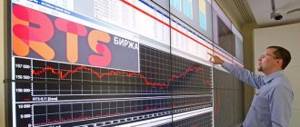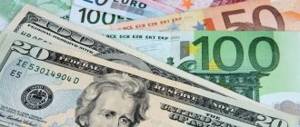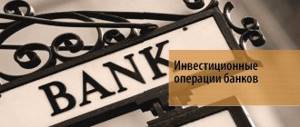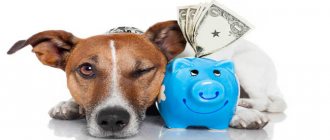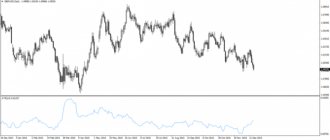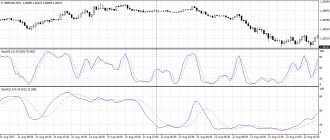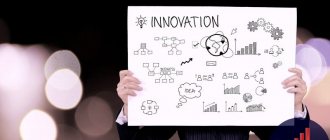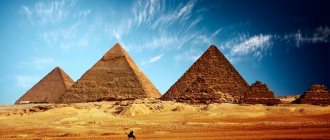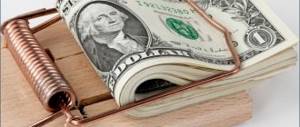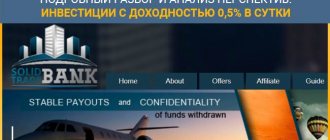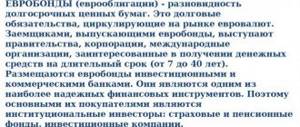The fact that making money on foreign currency is a real and quite profitable business - many people, even those far from the currency topic, were prompted by the significant devaluation of the national means of payment, which occurred in the country in a short time.
Over the previous years, the ruble depreciated by more than 2 times; means of payment in other CIS countries were not far behind it in this anti-record. Despite the fact that transactions with currency are usually called speculation, the law does not prohibit performing various actions with it. A definition with a negative connotation can be completely replaced by the word “operations”, and, in fact, is no different from other types of commerce, which are also based on the principle of buying cheaper and selling more expensive.
Earning money in foreign currency is attractive to many because it does not require special education, large start-up capital and other initial conditions necessary to start your own business.
Passive storage
For most people, the most familiar and comfortable way to handle currency that is in an asset is to store it at home or in a safe deposit box, without any movement. They believe that they have already made money on it, having secured their ruble savings by purchasing foreign currency, without even manipulating it in any way. Such a position has a right to life: after all, if the owner of foreign banknotes does not face the problem of obtaining quick and constant income on the exchange rate. In the end, he will still win.
Since no matter how sharply the exchange rate of the national currency fluctuates in relation to the currencies of other developed countries, there is a steady and constant tendency towards a decrease in its financial attractiveness. However, even if you receive a small profit, it would not be entirely correct to call passive storage of foreign currency precisely earnings on it.
Other large denomination dollar bills
The $500 is not the only rare large banknote. There are $1,000 bills with the image of Gruver Cleveland, the 24th president. They were withdrawn from circulation in 1969. The $5,000 bill features a portrait of J. Madison, 4th President and one of the authors of the US Constitution.
These banknotes were also withdrawn from circulation in 1969 and are put up for auction. The $10,000 banknote with the image of S. Chase, Secretary of the Treasury under Lincoln, had the same fate. Earlier, in the 19th century, $1 with his portrait was in circulation.
The largest dollar bill existing only for banking purposes is the $100,000 denomination. On it is a portrait of W. Wilson, the 28th President of the United States, historian, political scientist and 1919 Nobel Peace Prize laureate.
0
Earnings on currency exchange
A classic way to make money from fluctuations in the exchange rate of foreign payment units is to make money by buying and selling currency, taking into account changes in exchange rate differences. Modern technical means have made it possible to transfer the usual exchange path from offline mode, when you have to physically move between exchangers or banks, into the virtual space - when all operations are carried out on special online platforms.
The old proven method and new ways of making a profit when exchanging currency have their advantages and weaknesses. In order to use the first method, you need to have money, time and be able to quickly perform mathematical operations. The second path requires minimal knowledge of working with specialized services and the ability to analyze exchange rate trends.
Offline
To make a choice in favor of generating income from currency exchange using one of the existing methods, you need to become familiar with the strengths and weaknesses of each of them. Making money on offline exchanges has more weaknesses than advantages. The undoubted disadvantages include the need for:
- move between departments at a cost;
- have reliable knowledge about the “correct” points;
- stand in line, present documents, fill out forms;
- carry cash with the risk of losing it in a dark alley;
- have access to information about the amount of the commission.
In addition, it is difficult to monitor the exchange rate without using Internet resources. In the past, I exchanged currency offline, and the banki.ru resource always came to my aid. This is a really useful online resource that can help you find the best exchange rate in your city.
There are very few advantages to making money this way using exchange rates at exchange offices. Actually, the ability to immediately hold cash in your hands, lower risk of fraud and prospects for long-term use.
Online
Monetizing your addiction to continuously looking at your gadget screen can help you replenish your budget. Online currency exchange transactions have sufficient
number of advantages, including:
- independence from circumstances if you have a device and the Internet;
- relative speed;
- the ability to choose from various payment systems;
- abundance of methods;
- ease of use;
- availability of any necessary information.
The disadvantages of this method are unreliability (the Internet allows you to disappear without a trace, curtailing the project), connection to the Internet and the need to enter personal data confirmed by scans of real documents.
The scheme for making money by selling and buying currency is simple:
- registration in electronic payment systems (at least 3);
- monitoring of web wallets and exchangers through the Bestchange platform. A detailed review of the site is described in my blog article here.
- depositing funds (it’s better to start with small transactions);
- capital turnover (exchange);
- withdrawal of funds.
Why did the Treasury Department withdraw the $2 bill from circulation?
The denomination of the $2 dollar bill was not withdrawn from circulation and is still a circulating banknote in the United States. The Federal Reserve, however, does not request printing of this bill as often as others. The 2003 serial bill was the last to be printed and bears the names of former Treasury Secretary John W. Snow and Treasurer Rosario Marin.
The key to the successful distribution of $2 bills is that retailers use them just like any other denomination in their daily business. In addition, most commercial banks readily supply their retail customers with these notes if their customers request them in sufficient quantities. However, neither the Treasury Department nor the Federal Reserve can impose the distribution or use of any currency by banks, businesses, or individuals.
The US currency has undergone enormous changes throughout its history, as has the country itself. It remains to be seen what changes will occur with the design of banknotes. In recent years, many have advocated for a more diverse set of historical figures to be used to be more representative of a country's population and its history, while others have argued that paper money is falling out of circulation entirely as people use digital currency more. Whatever happens, the design of the US dollar will remain a part of American history.
How much can you earn on currency exchange?
Before starting practice, beginners are puzzled by the main question of what level of earnings in foreign currency they can expect. Profit margins will depend on several factors:
- Level of competence. It’s hardly worth relying on the “beginners are lucky” principle in this area. The surest way to successful transactions is knowledge in the area in which investments are planned. Otherwise, the calculation is only based on luck.
- Investment size. The larger the investment amount, the higher the income. The percentage profit is directly proportional to the invested funds.
Increasing the level of these parameters has a positive effect on growth and material well-being. In this case, an integrated approach is especially effective. Because having knowledge and small investments will make the growth slowly stable. However, even with a very large amount of funds it is easy to part with irrevocably if you use it irrationally.
Money protection
In the issue of protecting money, there are highly specialized issues that are checked using special methods, and there are some that can be checked by the average person.
For example, this is paint
. When making dollars, a high-quality product is used, which significantly increases wear resistance. You can check the authenticity of money by rubbing it with your finger: there are no abrasions on it, and your skin should not get dirty.
Important! The paint should shimmer and change colors from green to black if you turn the banknote at different angles.
Because American currency paper is actually a combination of linen and cotton, and is very different from that used to make books and other similar printed products. The dollar is very difficult to break:
if you pull its edges in opposite directions, it will begin to stretch a little.
If we talk about specifics, we can give an example of a 100-dollar bill, among the security elements of which there is a three-dimensional tape, a watermark, a security thread, a relief print, etc.
What currency to invest in
To save finances, it is worth creating a multi-currency portfolio. It is not far-sighted to invest all available funds in only one, currently the most stable currency. This approach, although not making money on currency differences in its pure form, will solve the main problems of investing - preserving capital, minimizing risks during times of high volatility in markets and crises. The US dollar should form the basis of the portfolio, with approximately 50% allocated to it, with minor variations depending on the situation.
The euro should also be allocated within 25 percent. The Chinese yuan can easily claim 10% of all funds in a multi-currency portfolio. The remaining interest can be distributed among the currencies of other countries. Their choice is influenced by the international situation, system and investment strategy. Stable currencies such as Swedish, Danish and Norwegian kroner deserve attention.
It’s a good idea to distribute your investments into digital currencies: Bitcoin, Ether, etc. Personally, I allocate about 15% of my savings to this.
Print volumes
Banknotes of different denominations are issued in different volumes, because... the need for them varies. As banknotes that have become unusable are removed from circulation, new ones are printed.
Banknotes in denominations of $100 are printed most often, because... they are used not only in the United States, but also in other countries. 4.4 million of these bills are issued every year.
The next most popular bill is the $1 bill. It is often used in calculations. Because The smallest denomination of banknotes is in high demand, paper wears out quickly. Its entire printing volume is 1.7 million per year.
The number of remaining banknotes printed is several hundred thousand per year, the amount of printed currency is about $971 billion. 99% of banknotes are freely used in payments around the world.
Investments in foreign currency
The global financial crisis, which began in 2008, in the current situation is aggravated by risks and negative economic processes in 2021. If you decide to choose to earn money in foreign currency, it is worth considering that all this makes financial investments quite a risky undertaking. During the current crisis, investments in foreign currency do not guarantee 100% preservation of funds.
Therefore, it is necessary to choose the most stable types of foreign payment units and carefully calculate possible risks. Among them, the leaders are traditionally considered to be the world's reserve currencies - the pound sterling, the euro, the dollar, the yen, the Swiss franc, the yuan, and cryptocurrencies. It will be possible to protect your financial assets from inflationary processes if you distribute investments between these means of payment and use them in various ways.
Deposit in foreign currency
One of the traditional and common ways to make money on exchange rates is to open bank deposits in foreign payment units. However, such a choice is not always justified. Since banks are commercial organizations aimed at making money, clients are usually offered a low fixed yield - about 1.75% and there is a downward trend
When choosing a bank to invest funds, you should check its reliability and not chase high interest rates. A list of stable financial institutions with ratings and descriptions, as well as a wide range of offers with high interest rates on deposit amounts are published on special platforms. When concluding a currency deposit agreement, you should carefully read all its terms and conditions.
A rational solution is to open multi-currency accounts. This choice will allow you to protect against the devaluation of one of the selected currencies by strengthening the other.
Bonds and shares
Income on the exchange rate will also be provided by the purchase of Eurobonds (Eurobonds) - securities that are denominated in foreign currency. They represent long-term (from 1 to 40 years) international debt obligations. Available coupons guarantee the right to receive interest within a specified period.
The interest rate of Eurobonds can be fixed or floating. This allows you to insure yourself against the depreciation of the ruble. To purchase bonds, you will need to open a trading account to gain access to the Moscow Exchange and contact a domestic or foreign broker.
At the same time, it is not at all necessary to delve into the intricacies of the foreign tax system and legislation. To avoid any difficulties, I personally use the services of the Tinkoff broker, with the help of which you can freely purchase shares of foreign companies in dollars and euros. And by the way, these companies also pay dividends in foreign currencies, which allows you not to depend on exchange rate differences, and even make money on it! A detailed review is presented on my blog in the article “How to make money with the Tinkoff broker.”
The return on such investments can range from 10% per year or more.
Signs on real banknotes
The dollar is counterfeited more often than other currencies by scammers.
The following techniques are used to protect all banknotes:
- Banknote paper is made from cotton and linen with the addition of synthetic fibers. Only 1 company knows the formula; the ink recipe is kept strictly confidential.
- Every decade, changes are made to the design of banknotes. Minor details make counterfeiting difficult.
- Microprinting, watermarks, fine lines, and security threads are used. Images are printed in relief.
- Banknotes are printed using a special technology: an ultra-clear image is obtained thanks to metal engraved forms that leave a relief on the paper.
- Images of presidents are made in intaglio. By adjusting the pressure, the intensity of the shade is controlled.
- On the front side there are elements visible only under infrared lighting.
- Using the serial number of a banknote, you can find out which bank is the issuer. If there is an asterisk next to it, this means that this note is 100,000th.
How to make money buying and selling currencies
Earning money from selling and buying currency can be done using traditional instruments or using innovative ones that have recently appeared in the realities of the modern foreign exchange market. In any case, this is not an easy task, success in which comes with knowledge and experience.
In addition to standard transactions through offline exchanges and purchases and sales through special platforms, you can earn money by buying currency and selling it through exchanges, making speculative transactions in the Forex markets, participating in binary options, and also by opening PAMM accounts. Each of these methods has its own characteristics that must be taken into account when choosing it as a means of generating income from foreign exchange transactions.
PAMM accounts
If you have funds and lack experience, a good solution would be to invest foreign currency funds in PAMM accounts. In this case, the money comes into management and is used by the manager for trading operations in the foreign exchange markets. The nuance of such an investment is that losses and profits are divided between the investor and the manager in proportion to the investment amount. The manager's services are paid and a commission is charged for them.
This type of earnings from selling and buying currency gives good profitability, provided you choose a reliable PAMM account. To determine whether it meets this requirement will be possible by familiarizing yourself with the following characteristics: the difference between profitability and maximum drawdown, duration of work, maximum drawdown level, amounts placed by the investor and the size of the manager’s own investments.
Forex
You can make good money on currency differences by carrying out transactions with foreign payment units on the main foreign exchange market - Forex. Making money from the falling exchange rate of the ruble and the strengthening of the US dollar is a fairly simple task. The main principle, as always, is to buy at a low cost and sell at a high cost, choosing the most opportune moment for this.
In order to start making money on exchange rates on Forex, you need to choose a broker, register and top up your account. You should approach the choice of a broker and partner company with special care and cooperate only with those who have an extremely positive reputation. Trading on Forex has a number of advantages, including a minimum entry threshold, no restrictions on the amount of earnings, round-the-clock operations, and the ability to use leverage. A detailed article on how you can make money on the Forex market is presented here.
Weight and other characteristics
A dollar bill of any denomination has a size of 155.956 * 66.294 mm. The weight of 1 banknote is 1 g. 10 million dollars, consisting of 100 dollar bills, will weigh 10 kg, 1 billion dollars - 10 tons. Weight and size are constant values; they do not change for several decades. This is one of the characteristics that provides protection against counterfeiting.
Every day in the United States, over 35 million banknotes of various denominations are printed. In monetary terms, this is about $635 million. Most of the new banknotes replace old ones - 95% of the annual volume. The cost of producing 1 bill (regardless of its denomination) is 5.7 cents.
The design of most paper money has not changed since 1928: these are images of American politicians on the one hand and historically important elements for the United States on the other.
The main color of US dollar bills is green. Until 1869, banknotes were printed in black and white. Such money was easy to counterfeit using photo printing. It was decided to add colored paint to the banknotes.
At that time, printing was carried out by a Philadelphia company, from which green dye had already been purchased in large quantities. It was inexpensive, did not irritate consumers, and was resistant to environmental factors. Today other shades are used.
How to “not get caught” in money
People who want to earn income from transactions in the financial market face many pitfalls: theft of bank card data, sale of counterfeit currency and other means of deception. The desire to earn income from currency exchange, its purchase and sale, as well as other transactions with foreign funds will be crowned with success if you follow a number of rules and adhere to the recommendations given by experts so as not to lose your existing foreign currency assets.
It is worth interacting with reliable Internet services, brokers, and financial institutions. Be wary of offers that are too profitable compared to the general mass. It is necessary to check the documents and information provided. It will be possible to make money on foreign currency, rather than losses, if you monitor data and monitor the situation on the market. It is important to keep codes, passwords, and other confidential information secret.
I hope, dear readers, I have answered all your questions. In any case, you can always contact me, as the author of this blog, and I will be happy to answer all your questions! All my contact information is presented in the “Contacts” section.
Specifics of US banknotes
The US currency is in great demand in the world, and therefore is widely used. Even citizens of other countries prefer to have not only national banknotes as cash, but also American money. Of course, $ has certain features that make it a unique means of payment. As a rule, this is associated with the need to protect banknotes from counterfeiting.
So, what specifics are associated with dollars:
- The production of the product is carried out in an atmosphere of maximum secrecy.
Foreseeable circumstance. The paint formula, the composition of the sheets used, the smallest nuances of the protection elements, symbols, etc. – all this refers to absolutely inaccessible information. - All banknotes are printed on wood-free sheets.
It consists of tightly woven and compressed flax and cotton fibers (in a ratio of 25 to 75 percent). The structure is also a mystery. - Identical dimensions and appearance.
All dollars are the same size. Regardless of the denomination, it is 15.6 cm by 6.63 cm. - The weight of banknotes is about 1 gram.
The value may increase because new elements added to bills change the indicated number by hundredths. - The design has become more diverse.
Today, for reasons of increased safety, traditional shades of green no longer constitute a color monopoly, because orange, blue, pink and purple elements appeared. - Each denomination has its own expiration date.
Money is used intensively and all over the world. This leads to rapid wear. The most commonly used banknotes are 1, 5 and 10 USD (United States dollar) - they lose their usefulness within 16 - 20 months of use. 2, 20, 50 and 100 dollars, on the contrary, last for 5 – 7 years. - The money machine in the United States operates every day.
It is important to ensure continuous circulation, because... banknotes quickly go out of circulation due to abrasion and acquired damage. The volume of money supply is constantly controlled. In America, about 34.7 million banknotes of various denominations are printed every day.
These are just the main features. In reality, there are more nuances, but not all of them are accessible to the average person.
Where was this money used?
We must take into account the fact that in 1928 the dollar exchange rate was significantly higher than it is now, so such a large bill was not used by ordinary citizens. In most cases, such banknotes were used for payments between large financial institutions and banks. This type of banknote was also widely used between criminal groups, since it was in the late 20s. XX century in America the mafia has raised its head high. By order of the President of the United States of America, Richard Nixon, such money was withdrawn from circulation in 1969, but it is an absolutely legal means of payment. However, since 1971, there has not been a recorded case where someone tried to pay with bills of this denomination.
It is also worth noting that until 1929, American dollars were of different colors (blue, pink and even yellow), and only since 1929 they became the monotonous green color that is familiar today. The $500 bills are notable because they were the first money to be a solid green color. The choice of this particular color is explained quite simply: it turned out that using green paint was the cheapest option, in addition, the green color was very resistant to external influences. It has also been proven that it is the color green that psychologically instills confidence in money and instills a sense of optimism, and these qualities are among the most important for real Americans. It should also be noted that this particular banknote was very difficult to counterfeit in those days; at that time, the highest technologies were used in its production.
The quality of protection against counterfeiting is also indicated by the fact that even today it is very difficult to counterfeit such money, although many such attempts have been made. There is nothing strange in this, since the rare value of such banknotes is very high. It is not uncommon for collectors to offer up to $5,000 for such a banknote, which is 10 times the face value of such a bill.
Rare US banknotes
Until 1945, issues of such currencies with different denominations were organized:
- 500$;
- 1000$;
- 5000$;
- 10000$.
Beginning in 1969, it was decided to gradually phase them out of use. It is interesting that at the moment only 10 thousand banknotes remain in circulation. They are tracked at the official level by the Federal Reserve. Currently, there are 336 banknotes left in circulation. You can buy 5000 thousand currency at an auction. Its starting price is exactly 2 times more expensive than the face value itself. If you are interested in how to earn cryptocurrency, then it is better to bet on getting acquainted with exchanges and other sites, but not buying these coins for rare American bills.
500 USD
The banknote features a portrait of the 25th President William McKinley. It was under this policy that the United States became a colonial state. On the reverse is the denomination itself. Money first came into circulation in 1928. Lost relevance due to the formation of the “strength” of American dollars.
1000 USD
On the front is a portrait of US President Grover Cleveland, who was both the 22nd and 24th President of the States. He became the only president to be re-elected to office, but with a break. At the end of 2010, 165 thousand units remained in use. The reverse shows the denomination, and there are also banknotes with this denomination, but which were issued at the beginning of the 20th century, and they depict other political leaders. And if you are interested in how to buy in an online store and how many dollars you need to have to get started, I recommend reading articles on www.gq-blog.com with valuable tips.
5000 USD
The bill is decorated with the image of James Madison, who co-authored the Bill of Rights, the US Constitution and the 4th president of the state. Today, such banknotes are in the hands of collectors and have been removed from free circulation. According to the Federal Reserve Service, more than 340 bills have not yet been seized and are in hand. Information about the sale of certain items is periodically included in the data on upcoming auctions.
10,000 USD
This note was last issued in 1944 and features a portrait of lawyer Samuel Chase on the front. It was he who wrote the Declaration of Independence, was the chief justice of the Supreme Court, and led the Treasury Department. Currently, there are only 336 banknotes left and only in private collections. I will say that the pictures changed: the first bill of this denomination was a security paper with a portrait of Andrew Jackson.
100,000 USD
It depicts a portrait of the 28th US President Woodrow Wilson, who received the Nobel Prize in 1919. It is he who is the author of the creation of the Federal Reserve System and it is not at all surprising that such an image was placed on one of the most expensive banknotes not only in America, but in the world as a whole. It is significant: money was used only in US domestic use in 1934 and 1935.
1,000,000 USD
It's hard to believe, but such a bill really exists. But this is not so much a means of payment as an original and very expensive souvenir that was released in 1988. It was made at the request of Teri Steward, chairman of the International Association of Millionaires, a co-organizer of the same organization. The front features a “portrait” of the Statue of Liberty. To become a member of such a society, it was necessary to purchase this bill. It has all the classic security features and is printed on special paper. Despite the fact that the MIR card does not have such a large limit, Russian owners can also use it in the USA.
On the reverse is the inscription: “This certificate is guaranteed solely by faith in the American Dream.”
16 years ago, a resident of “The States” decided to pay with a similar bill in a supermarket in South Carolina, but they did not accept her money and security was called. How the situation ended is not disclosed.
What do the serial letters and numbers of US bills mean?
One way to check for originality is to evaluate the number and serial code of banknotes. The first letter of the series indication corresponds to exactly when the banknote was issued:
- E - 2004,
- I - 2006,
- J - 2009,
- L - 2009.
Additionally, there are Federal Reserve indicators showing which of the 12 specific banks this money was printed in. In general, the alphanumeric encoding indicates the position of the banknote on the printing block, and is applied to the obverse. Similar accounting is being introduced for euro banknotes of various denominations. In many currency pairs that are quoted on Forex and stock markets, the dollar plays a significant role. In addition, it serves as the main means of payment in Zimbabwe, El Salvador and the Marshall Islands, despite the fact that these states have their own currencies.
I still recommend studying in detail who is depicted on the one-, twenty-, and 50-dollar US bills, especially if one of the ways to generate income is purchasing funds from banks or exchange offices for the purpose of holding and selling at a more favorable rate. Even despite the presence of 3D ribbons, a special shade of paint, a unique canvas, fonts, banknotes are still actively counterfeited and it is worth carefully studying each one when it comes into your hands, so as not to become a victim of fraudsters. Solid profits to everyone and only real US dollar bills with the highest denominations.
See also:
- Stephen Hawking is an example of the greatest mind in modern history and enormous willpower
- Who is a coach, mentor or trainer, what is professional coaching in simple words?
Author Ganesa K.
A professional investor with 5 years of experience working with various financial instruments, runs his own blog and advises investors. Own effective methods and information support for investments.
